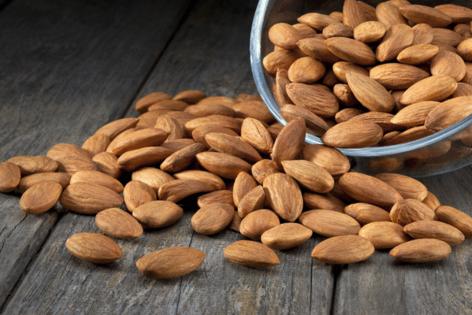On Nutrition: More on oxalates
Published in Nutrition
A recent column on oxalates — natural components in plant foods that, when consumed in excess, can interfere with calcium absorption and contribute to kidney stones — brought these questions from readers:
“Thanks for your recent article on oxalates and calcium. I have osteoporosis and I'm trying to get enough calcium, magnesium and vitamin D through both food and supplements. Do most forms of soy products (e.g. soybeans, soy burgers/sausage, soy milk, tofu, etc.) interfere with calcium absorption? Only when raw? Other tips for minimizing oxalate interference? Could you please send me a website link that has detailed, reliable information about this concern? Thank you very much!” — Dianne
All soy foods contain oxalates, which can interfere with calcium absorption. Yet, the oxalate content of these foods varies widely for several reasons, including how they were analyzed, grown and processed. For example, a 2021 article in the Journal of Pharmaceutical Research International reports that a 3.5 ounce serving of soy yogurt contains about 113 milligrams of oxalates and the same serving of tofu has 275 milligrams. Oxalate content is lower in foods that have been boiled, fermented or eaten along with animal milk or yogurt, say these researchers.
According to a 2022 Frontiers in Nutrition review by researchers from the Soy Nutrition Institute International, tempeh, soynuts and edamame are high in oxalates while soymilk tends to be lower. Good luck finding one good list. They can vary widely.
Reliable websites include the Bone Health & Osteoporosis Foundation (www.bonehealthandosteoporosis.org) or PubMed (https://pubmed.ncbi.nlm.nih.gov) a search site under the National Institutes of Health Library of Medicine.
Dave I. from Richmond, Virginia, writes, “I really needed the article on oxalates. Had a kidney stone last year which was horrible. So trying to lessen foods with them. I am vegan so I eat a lot of soy and mixed nuts. I can't give up the soy, but I could give up my mixed nuts. Do all nuts have oxalates? Or just almonds? And do I need to eliminate them from diet or just limit them? Thanks.”
I feel your pain, Dave. Oxalate accumulation in the urine of susceptible people is believed to play a role in the formation of calcium oxalate kidney stones.
Oxalates tend to accumulate more in the leaves and stems of plants (spinach is especially high, for example) and to a lesser extent in roots and nuts. All nuts (roasted as well as raw) contain oxalates but the amount varies. In general, almonds and soynuts rank the highest in oxalates, followed by cashews, hazelnuts, pine nuts and peanuts. Macadamia nuts are the lowest in oxalates, followed by pistachios, pecans and walnuts, according to a 2015 article in Clinical Nutrition Research.
Remember too, there’s a big difference in oxalate content between a few nuts and a whole can. Check with your medical provider for more guidance based on your individual condition.
©2025 MediaNews Group, Inc. Distributed by Tribune Content Agency, LLC.










Comments